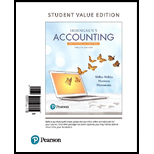
Cash Ratio: A ratio that reflects the ability to pay current liabilities by cash and cash equivalents is called cash ratio. It is useful to evaluate the cash available as cash is an important factor for day to day operations for any business.
Acid-test Ratio: It is a ratio used to determine a company’s ability to pay back its current liabilities using only liquid assets that are current assets except for the inventory and prepaid expenses. Also known as quick ratio, it is a part of liquidity ratios, used for the evaluation of a company’s liquidity.
Debt Ratio: It is the ratio between total assets of the company and the total liabilities. Debt ratio reflects the finance strategy of the company. It is used to evaluate company’s ability to pay its debts. Higher debt ratio implies the higher financial risk.
Debt to Equity Ratio: This ratio reflects the relationship of company’s total liabilities to total equity. It is used to measure financial leverage. Higher debt to equity ratio means that the company has financed its assets by debts more than the owner’s capital.
a.
To Compute: The current ratio of company B for 2017 and 2018.
b.
To Compute: The cash ratio of company B for 2017 and 2018.
c.
To Compute: The acid-test ratio of company B for 2017 and 2018.
d.
To Compute: The debt ratio of company B for 2017 and 2018.
e.
To Compute: The debt to equity ratio of company B for 2017 and 2018.
Trending nowThis is a popular solution!

Chapter 17 Solutions
Horngren's Accounting, The Financial Chapters, Student Value Edition Plus MyLab Accounting with Pearson eText - Access Card Package (12th Edition)
- Hello tutor please given General accounting question answer do fast and properly explain all answerarrow_forwardStevenson Manufacturing is planning to sell 450 storage bins and produce 420 bins during May. Each bin requires 600 grams of metal and 0.75 hours of direct labor. The metal costs $8 per 600 grams, and employees of the company are paid $16.50 per hour. Manufacturing overhead is applied at a rate of 120% of direct labor costs. Stevenson has 250 kilos of metal in the beginning inventory and wants to have 180 kilos in the ending inventory. How much is the total amount of budgeted direct labor cost for May?arrow_forwardprovide correct answerarrow_forward
- Management anticipates fixed costs of $65,000 and variable costs equal to 35% of sales. What will pretax income equal if sales are $320,000? Helparrow_forwardBefore prorating the manufacturing overhead costs at the end of 2016, the Cost of Goods Sold and Finished Goods Inventory had applied overhead costs of $59,700 and $54,000 in them, respectively. There was no Work-in-Process at the beginning or end of 2016. During the year, manufacturing overhead costs of $88,000 were actually incurred. The balance in the Applied Manufacturing Overhead was $94,500 at the end of 2016. If the under-or overapplied overhead is prorated between the Cost of Goods Sold and the inventory accounts, how much will be the Cost of Goods Sold after the proration? (rounded answer)arrow_forwardI want the correct answer with accounting questionarrow_forward
- I need help with this general accounting problem using proper accounting guidelines.arrow_forwardPlease help me solve this general accounting question using the right accounting principles.arrow_forwardI need help with this general accounting question using the proper accounting approach.arrow_forward

 AccountingAccountingISBN:9781337272094Author:WARREN, Carl S., Reeve, James M., Duchac, Jonathan E.Publisher:Cengage Learning,
AccountingAccountingISBN:9781337272094Author:WARREN, Carl S., Reeve, James M., Duchac, Jonathan E.Publisher:Cengage Learning, Accounting Information SystemsAccountingISBN:9781337619202Author:Hall, James A.Publisher:Cengage Learning,
Accounting Information SystemsAccountingISBN:9781337619202Author:Hall, James A.Publisher:Cengage Learning, Horngren's Cost Accounting: A Managerial Emphasis...AccountingISBN:9780134475585Author:Srikant M. Datar, Madhav V. RajanPublisher:PEARSON
Horngren's Cost Accounting: A Managerial Emphasis...AccountingISBN:9780134475585Author:Srikant M. Datar, Madhav V. RajanPublisher:PEARSON Intermediate AccountingAccountingISBN:9781259722660Author:J. David Spiceland, Mark W. Nelson, Wayne M ThomasPublisher:McGraw-Hill Education
Intermediate AccountingAccountingISBN:9781259722660Author:J. David Spiceland, Mark W. Nelson, Wayne M ThomasPublisher:McGraw-Hill Education Financial and Managerial AccountingAccountingISBN:9781259726705Author:John J Wild, Ken W. Shaw, Barbara Chiappetta Fundamental Accounting PrinciplesPublisher:McGraw-Hill Education
Financial and Managerial AccountingAccountingISBN:9781259726705Author:John J Wild, Ken W. Shaw, Barbara Chiappetta Fundamental Accounting PrinciplesPublisher:McGraw-Hill Education





